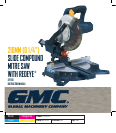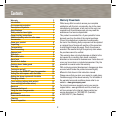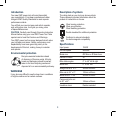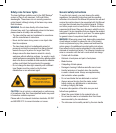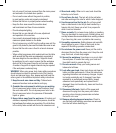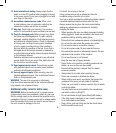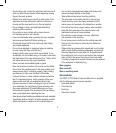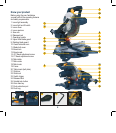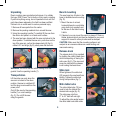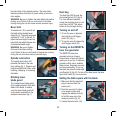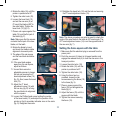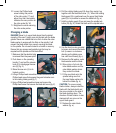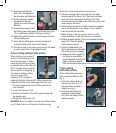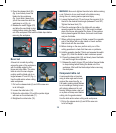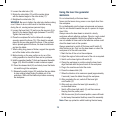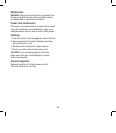
5
but only once it has been removed from the mains power
and secured in the locked down position.
• Do not use the saw without the guards in position,
in good working order and properly maintained.
• Ensure that the arm is properly secure when bevelling.
• Keep the floor area around the machine level,
well maintained and free of loose materials.
• Provide adequate lighting.
• Ensure that you are trained in the use, adjustment
and operation of the machine.
• Use correctly sharpened blades and observe the
maximum speed marked on the blade.
• Do not remove any cut-offs from the cutting area until the
guard is fully locked in place and the blade has come to rest.
• Ensure that the mitre saw is fixed to a bench wherever
possible.
• When cutting long pieces which extend well over the table
width ensure that the ends are adequately supported at
the same height as the saw table top. Supports should
be positioned in such a way to ensure that the workpiece
does not fall to the ground once the cut has been made.
A number of supports at regular intervals may be required
if the workpiece is extremely long.
WARNING. When using power tools, basic safety precautions
should always be taken to reduce the risk of fire, electric
shock and personal injury. Also, please read and heed the
advice given in the additional important safety instructions.
1. Keep the work area clean and tidy. Cluttered work
areas and benches invite accidents and injury.
2. Consider the environment in which you are working.
Do not use power tools in damp or wet locations. Keep
the work area well lit. Do not expose power tools to rain.
Do not use power tools in the presence of flammable
liquids or gases.
3. Keep visitors away from the work area. All visitors and
onlookers, especially children and infirm persons, should be
kept well away from where you are working. Do not let others
in the vicinity make contact with the tool or extension cord.
4. Store tools safely. When not in use, tools should be
locked up out of reach.
5. Do not force the tool. The tool will do the job better
and safer working at the rate for which it was designed.
6. Use the correct tool for the job. Do not force small
tools or attachments to do the job best handled by a
heavier duty tool. Never use a tool for a purpose for
which it was not intended.
7. Dress correctly. Do not wear loose clothing or jewellery.
They can be caught in moving parts. Rubber gloves and
non-slip footwear are recommended when working outdoors.
If you have long hair, wear a protective hair covering.
8. Use safety accessories. Safety glasses and earmuffs
should always be worn. A face or dust mask is also
required if the drilling operation creates dust.
9. Do not abuse the power cord. Never pull the cord to
disconnect the tool from the power point. Keep the cord
away from heat, oil and sharp edges.
10. Secure the workpiece. Use clamps or a vice to hold
the workpiece. It is safer than using your hand and
frees both hands to operate the tool.
11. Do not overreach. Keep your footing secure and
balanced at all times.
12. Look after your tools. Keep tools sharp and clean for
better and safer performance. Follow the instructions
regarding lubrication and accessory changes. Inspect
tool cords periodically and, if damaged, have them
repaired by an authorised service facility. Inspect
extension cords periodically and replace them if
damaged. Keep tool handles dry, clean and free from
oil and grease.
13. Disconnect idle tools. Switch off the power and
disconnect the plug from the power point before
servicing, when changing accessories and when
the tool is not in use.
14. Remove adjusting keys and wrenches. Check to
see that keys and adjusting wrenches are removed
from the tool before switching on.



